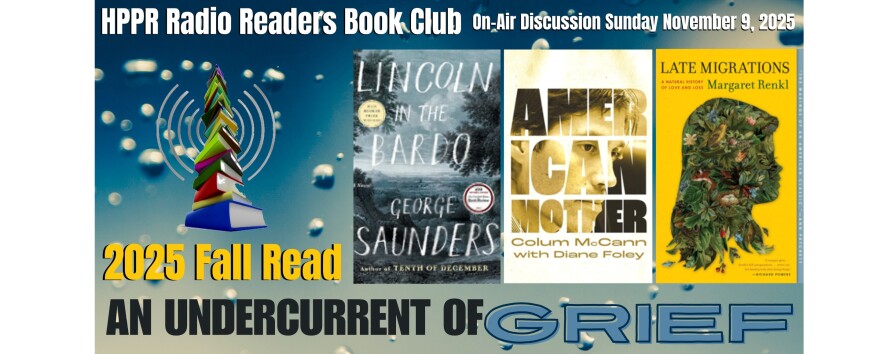This book may contain language, sexual content, and themes of grief and loss, which may be challenging for some readers. Reader caution advised.
Mistakes Were Made
by Ryan Brooks
Hello, this is Ryan Brooks, an English professor from Canyon, Texas. I’m on your airwaves today to discuss George Saunders’ comic 2017 novel Lincoln in the Bardo, for HPPR’s Radio Readers Book Club.
The book is set on one night in 1862, in a Washington, D.C., cemetery teeming with ghosts who refuse to acknowledge they are ghosts. The body of Abraham Lincoln’s 11-year-old son, Willie, cut down by typhoid fever, has just been laid to rest, and the grief-stricken President keeps returning to the crypt to cradle Willie’s body. The ghosts, having seen horrible things happen to children’s spirits when they remain stuck in this limbo, want to rescue Willie from this fate, and thus they must somehow convince him to move on into the afterlife even while fighting this transition themselves.
While the parts of the novel focusing on Lincoln are based on a true story, this central conflict is, obviously, Saunders’s invention. These supernatural elements make Lincoln in the Bardo an example of what critics have taken to calling speculative fiction, an umbrella term for genres like sci-fi, horror, and fantasy, which do not seek to reproduce reality as we know it, like realism, but instead speculate a “what if”? What if our reality was different in some crucial way? What if ghosts, and the Buddhist notion of the bardo – an intermediate or transitional state after death – were as real as historical figures like Abe and Willie Lincoln?
By the time he published Lincoln in the Bardo, his first novel, Saunders was already well known for using such speculative elements in his short fiction, and in an essay published in 2007, “Mr. Vonnegut in Sumatra,”, he offers a reason why. As he explains, what he learned from reading Kurt Vonnegut’s Slaughterhouse Five, which mixes stories about World War II with stories of space aliens, is that accurately capturing the reality of an author’s experiences is NOT the point of art. “In fact,” Saunders writes, [quote] “Slaughterhouse Five seemed to be saying, our most profound experiences may require this artistic uncoupling from the actual.” (end quote)
So: what is the point of Lincoln in the Bardo’s “artistic uncoupling from the actual”? One tentative, partial answer is that by centering his book on characters who literally deny they are dead, Saunders hopes to draw attention to how the living tend to deny death as well, in the specific sense that we tend to deny the fundamental consequence of our mortality, the consequence that – as an existentialist might put it – we are condemned to be free. In other words, I think that Lincoln in the Bardo expresses the classic humanist theme that because we are neither immortal nor all-knowing, we are condemned to be constantly making difficult choices, and to deny that meaning comes from these choices is to live an inauthentic life.
This is why, for the three primary ghost-characters, acceptance of death goes hand-in-hand with acts of heroism, even if sometimes, narratively, the acceptance comes after the act. Fittingly, the ghosts they must try to defeat, the ones who seek to trap Willie and other children in limbo, are made to seem extra villainous because they refuse to take responsibility for the heinous crimes they committed while alive, muttering only (quote) “Mistake were made.”
For HPPR’s Radio Readers Book Club, I’m Ryan Brooks. Thanks for listening!










